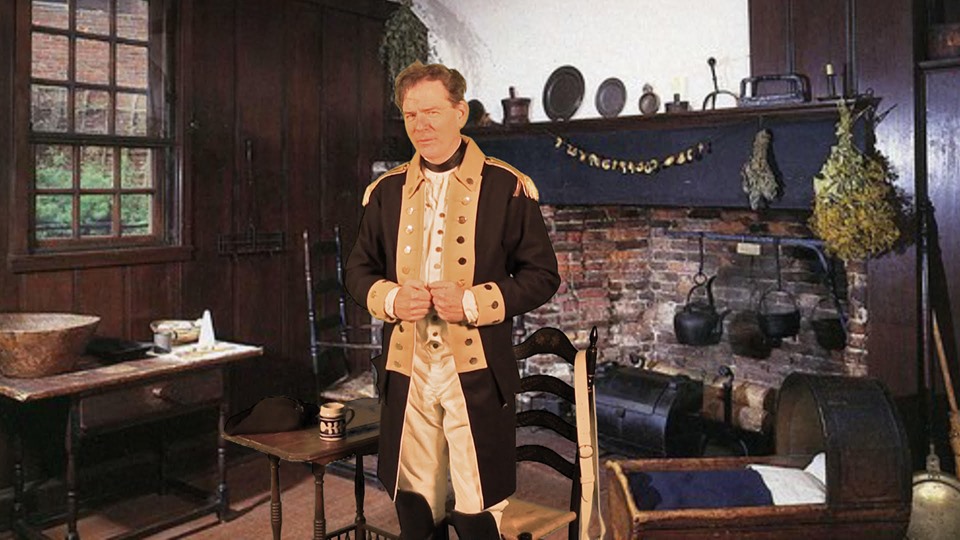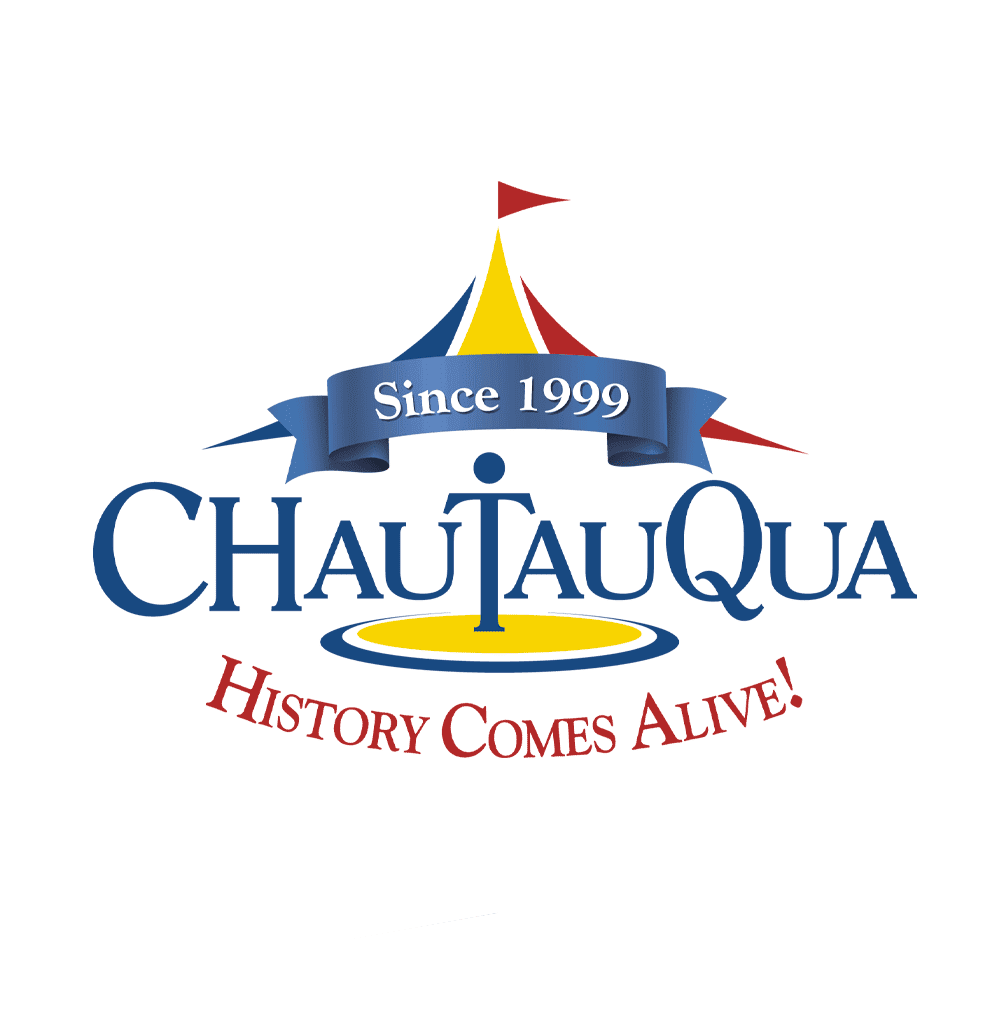
Event details
- Thursday | January 16, 2020
- 7:00 pm - 8:30 pm
- Headquarters Library, Barrett Room, 151 S Church St, Spartanburg, SC
- (864) 596-3503
View Map | Cost: Free
Daniel Morgan, hero of Cowpens, Portrayed by Ken Johnston
On the anniversary of the Battle of Cowpens, Brigadier General Daniel Morgan returns to the scene of this brilliant victory. Hear the inside story on southern history by one of the most gifted battlefield tacticians of the American Revolutionary War. As General Nathaniel Greene said about him: “Great Generals are Scarce — there are few Morgans out there.” No wonder Spartanburg placed a statue of him downtown and called the place Morgan Square.
And as always at Chautauqua – the audience is part of the show. History comes alive at this Free Chautauqua performance.
This performance is presented in cooperation with Cowpens National Battlefield, the South Carolina SAR, the Battle of Cowpens Chapter of the DAR, and the Friends of the Spartanburg County Public Libraries.
Opening music: Pam & Fred Stoll
Free Show and Free parking

KEN JOHNSTON (Daniel Morgan) Mr. Johnston is a nationally acclaimed historical interpreter who has performed for Colonial Williamsburg, Mount Vernon, the Smithsonian’s National Archives and National Portrait Gallery, English Heritage-UK, Atlanta History Center, National Civil War Naval Museum, and Northeast Georgia History Center. He is a member of the Screen Actors Guild and has appeared on National Geographic Channel, History Channel, Food Network, PBS, and Cartoon Network’s Adult Swim.
Ken has previously performed in Spartanburg Chautauqua as Benedict Arnold, Banastre Tarleton and Patrick Henry. He is currently Curator of Education – Northeast Georgia History Center at Brenau University. History-now.org
Daniel Morgan, an American hero of the southern theater during the American Revolution, grew up with a rebellious streak. As a young man, he settled in Virginia’s Shenandoah Valley outside Winchester. Morgan worked as a teamster, hauling freight to the eastern part of the colony and eventually received the nickname “The Old Wagoner”.
His teamster career drew him into the French and Indian War, during which he helped to supply the British Army. At one point, Morgan annoyed a superior officer who struck him with the flat of his sword. Morgan knocked the man out. For his impertinence, Morgan was punished with 500 lashes—typically fatal number. He survived the ordeal, carrying his scars and his disdain the rest of his life. Afterward, when Morgan retold the story, he commonly boasted that the British had miscounted, only giving him 499.
Morgan eventually joined a company of rangers in the Shenandoah Valley. Outside Fort Ashby, Morgan and his companion were ambushed by Indians allied with the French. Morgan took a bullet through the back of his neck that crushed his left jaw and exited his cheek, leaving him with new permanent scars. Fortunately, Morgan survived the encounter.
After the outbreak of the American Revolution, Morgan led a force of riflemen to reinforce the patriots laying siege to Boston. Later in 1775, Morgan joined the American expedition to invade Canada organized by General Benedict Arnold. During the Battle of Quebec, Arnold suffered a wound to the leg, forcing command of the American forces on Morgan. The combat, however, resulted in his capture along with 400 other Americans. His release several months later was followed by his promotion to colonel.
One of Morgan’s most valuable qualities as a commander was his ability to think beyond the confines of the accepted standards of warfare. Not long after becoming colonel of a corps of light infantry, commonly called “Morgan’s riflemen,” he began to employ tactics designed to disturb the disciplined Royal troops. He and his men wore Indian disguises and used hit-and-run maneuvers against the British in New York and New Jersey throughout 1777.
Morgan was indispensable to the Continental Army during the New York Campaign, but he grew irritated when he repeatedly failed to receive promotions. The commander-in-chief appointed Morgan colonel of Virginia infantry regiment, but he was continually passed over for promotion to a more elevated rank. Because of this, rather than resign, Morgan accepted an “honorable furlough.”
By 1780, Patriot forces in the South were desperate for Morgan’s services; Horatio Gates plied him with a brigadier generalship in exchange for resuming his military endeavors in the Carolinas. Once Nathanael Greene assumed command of southern American troops, he granted Morgan command over one arm of the southern forces and tasked him with harassing Tories in the South Carolina back country.
Morgan’s main adversary was British Col. Banastre Tarleton and his Legion of dragoons. The two men faced off at Cowpens in South Carolina on January 17, 1781. Morgan emerged victorious and secured his reputation as a skilled military tactician. Utilizing knowledge of his enemy’s aggressive and impulsive behavior, Morgan lured Tarleton into a trap with a fake retreat. Tarleton charged, only to be surprised when Morgan’s infantry turned to fire and a hidden cavalry force joined the conflict.
In 1790, Congress granted Morgan a gold medal for his victory at Cowpens. Morgan continued to serve in the militia, leading a force against the Whiskey Rebellion agitators. He also went on to serve one term in the House of Representatives as a Federalist near the end of his life.
1736 (July 6) – Morgan is born in Hunterdon County, New Jersey
1753 (age 17) – Leaves home after a fight with his father, eventually settling near what is now Winchester, Virginia
1755 – French & Indian War – Serves in Virginia Militia as a teamster for the British Army on the ill-fated Braddock Expedition (along with George Washington); this is the origin of his nickname “the Old Waggoneer”
June 1775 – Travels to Boston as commander of Virginia’s Rifle Companies during the Siege of Boston, under overall command of George Washington
1775-1777 – Takes part in the Invasion of Canada & Battle of Quebec (serving under Benedict Arnold), and the Battles of Saratoga/Freeman’s Farm/Bemis Heights (also under Benedict Arnold)
1778-1780 – Out of combat, then in retirement for health and personal reasons (disaffection with Congress)
1781 – After coming back to service in late ’80 under the disastrous General Gates, his new commander, the highly talented General Greene, gives Morgan an independent command and discretion to use his forces to harass British units in the Carolina Back-Country – leading to Morgan’s spectacular victory over Banastre Tarleton at the Battle of Cowpens. Later in ’81 he retires again.
1794 – Serves as Major General during the so-called “Whiskey Rebellion”
1797-1799 – Federalist member of the U.S. House of Representatives from Virginia’s 1st district
1802 (July 6) – Died, aged 66, in Winchester, Virginia
As to war, I am and always was a great enemy, at the same time a warrior the greater part of my life, and were I young again, should still be a warrior while ever this country should be invaded and I lived — a Defensive war I think a righteous war to Defend my life & property & that of my family, in my own opinion, is right & justifiable in the sight of God.
An offensive war, I believe to be wrong and would therefore have nothing to do with it, having no right to meddle with another man’s property, his ox or his ass, his man servant or his maid servant or anything that is his. Neither does he have a right to meddle with anything that is mine, if he does I have a right to defend it by force.
Daniel Morgan : a revolutionary life by Albert Louis Zambone (2018) Available in Spartanburg Library
